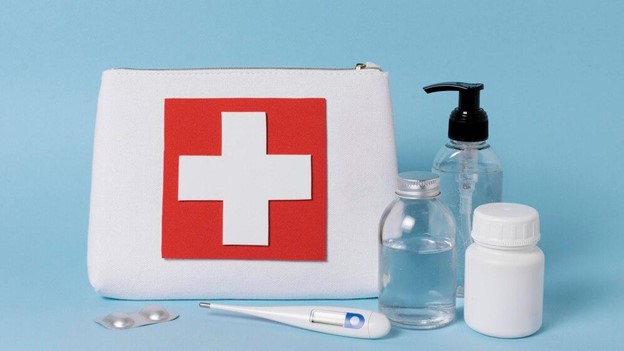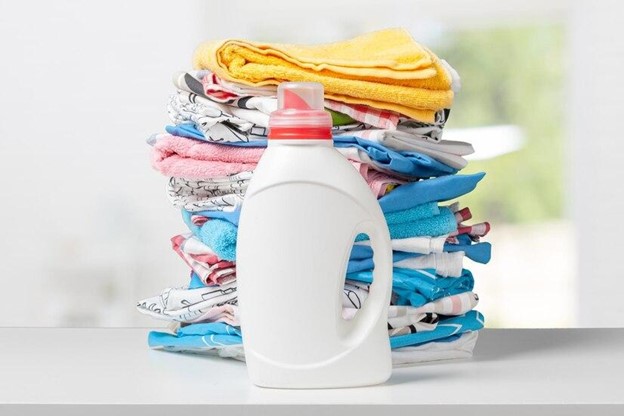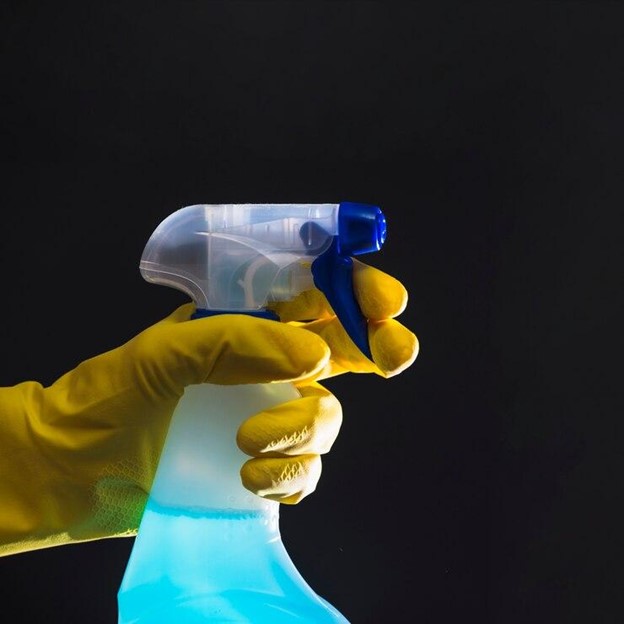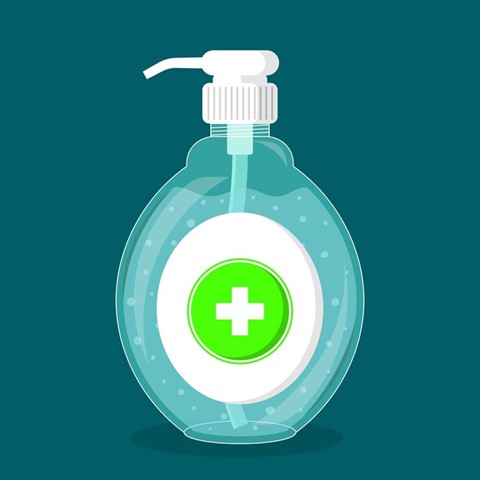Importance of Antiseptic Liquids in Healthcare: Things You Should Know
Addressing misconceptions is crucial. Debunking myths, such as the idea that higher concentrations are always better or that antiseptic liquids are harmful, helps users make informed decisions about their usage.
Antiseptic liquids stand as indispensable lifesavers within the realms of healthcare, representing a timeless concept that has evolved over centuries. While historical practices leaned on alcohol and salts for their antiseptic properties, the contemporary healthcare landscape has witnessed a revolutionary transformation with the advent of liquid antiseptics. These formulations have been instrumental in preserving lives for ages.
In the records of medical progress, the emergence of antiseptic liquids has been a watershed moment, reshaping the very foundations of the healthcare industry. No longer confined to mere first aid applications, these liquid marvels have seamlessly integrated into diverse realms, ranging from meticulous wound care protocols to the daily rituals of bathing. The versatility inherent in antiseptic liquids makes them an invaluable asset across various facets of personal and public health.
This blog aims to dig deeper into the versatile nature of antiseptic liquids, exploring their diverse applications and shedding light on optimal usage practices. By unveiling the intricacies surrounding these liquid safeguards, readers will gain insights into harnessing their full potential for health and hygiene. Additionally, the blog will address frequently asked questions, demystifying common queries related to antiseptic liquids.
Why are Antiseptic Liquids Important?
Antiseptic liquids are a combination of chemicals, primarily, Chloroxylenol which is used to prevent and control infections. Their main objective is to kill and stop the growth of microorganisms like bacteria, viruses, and fungi that can easily form around wounds and cuts in the body.
The antiseptic liquid disinfects the wounds that are exposed to dirt, unwashed hands and microorganisms present in the air. They also help in preventing the wounds from an infection. Besides this, antiseptic liquids can also be used for cleaning your household items to protect them from growing bacteria, viruses, and fungi.
Advantages of Antiseptic Liquids
Antiseptic liquids are very important during the prevention and care of any wound or cut from any infection or disease caused by bacteria. Their role in speeding up the recovery process often sets them apart. Proper wound disinfection with antiseptic liquids is essential in minimizing the risk of further complications. .
Antiseptic Liquids for First Aid

First aid situations can be very tricky and time sensitive. It requires immediate and effective solutions to any wound, cuts, or abrasion. Antiseptic liquids often help in these situations. These liquids hold a very important role in the first aid kits everywhere around the world. Their role is not only to disinfect wounds but also to prevent any infection from growing.
Often, we see the antiseptic liquid used while cleaning the wounds and hence we should educate individuals on using the antiseptic liquids during first aid situations and mitigate the risk of any further complications.
Antiseptic Liquid for Wounds
Germs that are present everywhere often enter our body through an open wound. Wounds have a high possibility of getting infected, either by unwashed hands or air. The recovery from a wound depends on various factors like the part of the body where the wound is or, the depth of the wound. Other than this, our immune system also plays an important factor in treating a wound.
Antiseptic liquids for wounds cleanse the area that is prone to infection and help in the healing process. It also helps in cleansing any soluble debris on the wound. One must wash their hands before applying antiseptic liquids. We should keep the area dry before applying dressing to the wound.
Antiseptic Liquid for Bathing

The water around us can be contaminated with microorganisms. Especially the stored water, that can contain and breed, types of infection and disease-inducing agents. Besides this, we often touch, walk, and sit around places that are already infected with harmful bacteria and viruses.
Like we are advised to wash our hands with a disinfectant bar soap or liquid, we are also recommended to include antiseptic liquids in our bathing routines as well. Using an antiseptic liquid can give us protection from harmful bacteria and viruses that can target the body and skin.
Difference Between Disinfectant and Antiseptic Liquid
While disinfectants and antiseptic liquids kill microorganisms, there is a key distinction. Disinfectants are designed for use on surfaces, while antiseptic liquids are formulated for application on surfaces as well as living tissues, such as skin and mucous membranes. Disinfectants are sometimes advised not to be used on the skin as they can cause damage to the skin.
Safe Usage of Antiseptic Liquids
Ensuring the safe and effective use of antiseptic liquids involves following recommended guidelines for concentration, application methods, and contact time. Overuse or misuse can lead to skin irritation and other adverse effects.
DIRECTION FOR ANTISEPTIC USE:
Wounds, cuts, abrasions and insect bites: Wash with diluted Dettol Antiseptic Liquid 3 medicine measures (15 ml) in a glass of water (300 ml). (one medicine measure = 5 ml).
DIRECTION FOR SURFACE USE:
Floors and hard surface disinfection: dilute 20 ml in 100 ml of water. Apply to surface and leave on for 3 minutes. Remove by wiping the surface.
Avoid any contact with the eyes. In case of contact with eyes, rinse immediately with plenty of water and seek medical advice. Do not drink or swallow antiseptic liquid as it can contain chemicals that can be harmful to your body. Drink plenty of water and milk if you swallow the liquid.
Common Myths and Misconceptions About Antiseptic Liquids

Addressing misconceptions is crucial. Debunking myths, such as the idea that higher concentrations are always better or that antiseptic liquids are harmful, helps users make informed decisions about their usage.
Myth: Higher Concentrations Are Always Better
Reality: Contrary to popular belief, using higher concentrations of antiseptic liquids does not necessarily lead to better outcomes. In fact, excessive concentrations may increase the risk of skin irritation and adverse reactions. Following the recommended guidelines for dilution and application is essential for achieving optimal results without causing harm.
Myth: Antiseptic Liquids Can Replace Regular Soap
Reality: While antiseptic liquids are effective against microorganisms, they are not a substitute for regular soap when it comes to removing dirt, oils, and other debris from the skin. Soap and water remain essential for thorough cleaning, and antiseptic liquids should be used in addition to, not instead of, regular hygiene practices.
Myth: All Antiseptic Liquids Are the Same
Reality: There are various types of antiseptic liquids, each with its unique composition and intended use. Assuming that all antiseptic liquids are interchangeable can lead to suboptimal results.
Frequently Asked Questions:
What is an antiseptic liquid used for?
Antiseptic liquids prevent and control infections in living tissues, including skin and mucous membranes. They can also be used for bathing.
Is Dettol antiseptic liquid used in laundry?
Regular laundry detergents are designed to get rid of dirt and stains but may not always get rid of bacteria. While not commonly used in laundry, some people add a small amount to laundry for its antimicrobial properties.
What are the ingredients of Dettol antiseptic liquid?
Ingredients are as follows, Chloroxylenol for germ protection. Pine oil, castor oil for natural oils, and Water, isopropyl alcohol, caustic soda, and caramel for helping agents.
What is the role of antiseptic liquid in controlling infection?
Antiseptic liquids kill or inhibit the growth of microorganisms and help reduce the risk of infections in wounds or on the skin.
Are antiseptic liquids safe?
When used according to guidelines, antiseptic liquids are generally safe. However, misuse can lead to skin irritation and other adverse effects.
